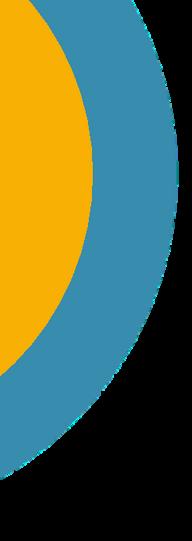PREPAREFOR LIFT-OFF
How to fuel your soft skills program to reach orbit quickly





Recent research by Gartner shows that L&D leaders are placing Leader & Manager
Effectiveness as the #1 business-supporting HR initiative in 2023. Why? Because effective leadership and management directly impact business outcomes.
As economic conditions continue to be challenging, companies with effective leaders and managers have a clear edge. They are able to lead teams of people who are:
Engaged, which translates into higher productivity
Fulfilled, which leads to higher retention rates

Innovative, which creates better products, services, and processes
Collaborative, which develops more creative and inclusive cultures
Resilient, which reinforces strong performance amid change
But how do companies support these kinds of leaders and managers? The answer is soft skills development programs focused on behaviors the actions your employees take every day.
When your employees learn, practice, and regularly engage in the right behaviors, they become leaders who inspire others and themselves to be engaged, fulfilled, innovative, collaborative, and resilient.
Then leadership and soft skills development is no longer “nice-to-have” — it’s a must-have for company growth.
In 2019, companies spent $3.5 billion on leadership development and soft skills initiatives globally. Yet in a McKinsey survey of business leaders, only 11% agreed that these initiatives were effective.
Why do so many leadership and soft skills programs fall short or even fail to get off the ground?

Whatever your circumstances, lay the groundwork for soft skills programs that actually work with these two phases:
1. Discover your mission.


Have discussions with key stakeholders and learn about the needs and problems that your program needs to address to make an impact on the business.
2. Chart your journey. Connect the dots from your organization’s business goals to the employee behaviors your program will impact.


Commit to developing an effective soft skills program by choosing a small action you’ll take today.
Choose your small action:
Read through this guide. Record my intention for this program on a post-it note and put it in my workspace. Tell a friend or co-worker that I will build a soft skills program that makes a measurable impact in my organization. Start a project document for brainstorming about my program this week. Or, create your own action:
Feeling the power of taking action? TAKE ACTION NOW
Verb’s platform features Take Action & Reflect activities that transform learning into action and growth.
Start by taking one small action.

Talk to the right people to understand the needs of your organization and its employees.
What would make your C-suite team prioritize your budget needs?
What would inspire your employees to invest time in developing soft skills?


Too many soft skills programs are designed without fully understanding the needs and pain points of key stakeholders — from your organization’s leadership team to the employees who will participate.
By asking the right questions to the right people, you can build a program that directly meets the organization’s key needs in a way that benefits everybody.
Step one is identifying the right people to talk to within your organization.
Start with your boss.
They can brainstorm business pain points and program needs with you — and also suggest others to talk to. Ask about other programs seeking funding to better understand what’s being evaluated.
Check with leadership.
Speak with at least one person on your organization’s executive or leadership team to ask about the most pressing needs of the business and its most important pain points. Find out how they think about soft skills/leadership development and start building relationships.
Connect with the person who approves your program’s budget.
Discover what they need to know and understand before they can approve your budget. Learn the outcomes and data they want to see from this program.
Talk to other functional department heads or team leads.
Focus on their goals and pain points not whether they prefer online learning or workshops. Ask what they’re expected to deliver this year and/or how people fall short of expectations. They know what’s going wrong on their teams — get them talking about it!
Include your learners.
After conversations with your boss, leadership, and team leads, you’ll have an idea of the role/position your program will reach. Speak to a few individuals in this role/position to discover how they want to learn and grow, and how much time they can dedicate.


Don’t skip this step — even if you can’t do a full listening tour.

Figure out how many discussions are feasible, and prioritize your list of stakeholders. A few is better than zero, and you can continue these conversations over time.
If you don’t know who to talk to, start with your boss.
Ask them and everyone else you end up talking to for recommendations and introductions.
If you can’t talk to everyone on your list, make contact.
An email or poll with 2-3 thoughtful questions can gather valuable information and start conversations.
It takes some work at the beginning to know a person, build a relationship, understand what is important to them… Go out and hear the feedback. See what the leaders really need. Make sure you ’ re filling the gaps they need. Otherwise there’s a mismatch.”
KAT STEINMETZ,You may already have ideas for your soft skills program, but this isn’t the time to share them. Take this opportunity to absorb your stakeholders’ point of view. This step allows you to design a program that matches your organization’s needs — and develop metrics that prove its effectiveness.
Use these five question areas to develop specific questions for your stakeholders. What are the main business goals for the next year?
NARROW IT DOWN. Ask stakeholders to identify their top 2-3 business goals. THE WHY. Find out why these goals are important.
WHO’S INVOLVED. Learn which employee groups are key to meeting these goals.
Which pain points and challenges could stall these goals?

NARROW IT DOWN. Ask stakeholders to identify the top 2-3 pain points/challenges.
INVITE QUICK BRAINSTORMS. What could offset these pain points and challenges?
COMMUNICATION. What information/knowledge do people need to reduce these pain points?
1. 2. 3.
If you had a magic wand, how would employees need to act differently to meet these goals and reduce these pain points?
PINPOINT THE WHO. Which roles/teams do your stakeholders believe are struggling or causing issues?
START DOING. What do these employees need to do more often?
STOP DOING. Which behaviors or habits are currently causing problems and need to be stopped?
GET SPECIFIC. Keep asking questions until stakeholders start sharing real stories and examples.
In terms of training and skills development, what has worked well — and what hasn’t?
START WITH WHAT HASN’T GONE WELL. If the stakeholder had a bad experience, they will share!
PIVOT TO POSITIVE EXPERIENCES. Encourage specific sharing about what made programs successful.
BOTTOM-LINE LESSONS LEARNED. What can help you build on past successes and avoid known issues?
You discover your mission not only by talking to stakeholders, but also by reviewing available data. Dedicate time to looking over employee survey data and reviewing evaluations for past soft skills and leadership training.
Which hard metrics would show that soft skills training is helping?
BEGIN WITH SHORT-TERM METRICS. Which metric(s) would show early progress to your stakeholder?
IDENTIFY PERFORMANCE INDICATORS. Which indicators would show behavior change? Which ones would demonstrate to the stakeholder that the program was successful (e.g., projects completed faster, how better communication led to better outcomes).
INCLUDE LONG-TERM DATA. What company metrics does the program support? Does your stakeholder see how your program connects to employee engagement surveys, retention, promotions, etc.?
• What’s the timing of employee surveys?
Understand when this data was gathered and when the next survey(s) are planned.
• How are people struggling?
Look for themes in skills that are missing or complaints that are persistent.
• What are different needs in different areas?
Is there a functional department or particular role that is identifying specific pain points?

• What can you impact?
Choose 1-3 of the survey questions that should be affected by your program. How might your program impact the survey metric?
Get some momentum going for your soft skills program by stopping right now and taking action. Choose your small action, and do it now!
Create a list of 3 people to interview and identify a timeframe for finishing these discussions.
Reach out to 1-2 stakeholders and schedule a meeting.
Pick 1-2 people to talk to and use the 5 areas of inquiry to create a list of questions to ask them.
Review past employee survey data results (or reach out to someone who can access this data).

Or, create your own action:
Just do it! The Verb platform can show how employees are putting learning into real action.
You’ve discovered your mission. Now chart the journey of your effective soft skills program.



If you ’ ve met with the right people, asked the right questions, listened carefully, and analyzed relevant data, you understand your stakeholders’ top business goals and challenges. The next phase is to map how your soft skills program will help employees meet these business goals and address challenges.
This is where your organization needs you as an L&D leader. Your role is to synthesize what you have learned and put together a program that makes an impact.
Listen to your learners. That’s really important. Talk to your stakeholders, but don’t necessarily do exactly as they say. That’s not your job to just be an order taker. Your job is to actually think and build on behalf of the learners that you support.
Meet the cross-section of what the business needs and what these humans need in the context of what’s happening for them.”


In this phase, you create the high-level guiding structure — the who, what, and why — for your soft skills program. This is when you do the thinking that will later guide how your program is designed.
Start with the business goal, and end with the behavior that the program can impact. Here’s a quick case study example in 5 steps to demonstrate how this works.
PAMELA MATTSSON VP of People and Organizational Development, OutreachThe data: A company ’ s recent employee engagement survey shows that employees are overwhelmed with their work and frustrated they’re not getting the support, communication, feedback, and guidance they need from their managers. Additionally, this company is receiving many poor Glassdoor reviews about the quality of their managers from employees –potentially driving away future talented candidates.
The goal: Your company wants to improve the engagement survey metric related to manager support so it can retain its outstanding employees, reduce turnover, and attract top talent as the company grows.
Steps
Case study example
1. Start with the business goals/ challenges (near-term and long-term).
2. Choose the employee role/group with the most influence on this goal/challenge.
3. Identify how this employee role/ group could impact the goal/ challenge.

Near-term: Company wants improved metrics around their managers in the upcoming employee engagement survey. Long-term: Increase retention/reduce turnover and attract top talent.
Frontline managers
Effective frontline managers could provide team members with the support they need and provide a larger positive impact across the organization
4. Determine what the employee role/ group needs to LEARN to impact the goal/challenge.
Frontline managers need to learn and practice what is most effective to support their team members to work well together, achieve results, and thrive.
Frontline managers need to:
5. Name 2-3 behaviors that the employee role/group can DO to accomplish step 3.
• Understand daily behaviors of effective managers
• Deliver actionable feedback and clarify expectations
• Learn to delegate to foster responsibility
Don’t go too broad here. By focusing on 1-2 goals/challenges, you can design a more targeted program so it’s easier to track effectiveness.
personal motivation and could impact larger groups
Choose a role that has
Keep on your radar connect the goal/ challenge in step 1 to the group in step 2.
The goal here is simply to
Don’t worry about getting too specific yet. Once again, keep it high-level: 1-2 sentences. You will flesh out specific topics when you begin program design.
Identify 3-5 specific actions/behaviors that can impact the goal/challenge.
of employees. Include frequency and timing when possible.

You’ve charted at a high-level how this program would function. Now, return to a few of your original stakeholders and ask for their feedback at this stage. You might start by sharing your learning journey map with your boss and work up to preparing a deck for someone on your leadership team.
Here’s what you achieve with this feedback round:
• Check in to make sure you ’ re addressing the right goals/challenges.
• Give your stakeholders something tangible to react to, so they can share
and concerns.
ideas
• • •
Get input on what would be the Brainstorm ideas about how to create
most valuable metrics time, space, and buzz
to track and share. for your program.
Build buy-in for your program.
You’re almost there! Soon you’ll choose specific skills and topics to cover, design the blend of online and in-person learning experiences, and determine how to measure success. But by doing these phases first 1. researching/interviewing and 2. charting your learning journey map you’ll have a strong foundation for a program that gets results.
Are you a natural researcher who could keep asking questions?
Maybe you love to start a spreadsheet and create a detailed plan?
Or, are you someone who quickly jumps right into a project?
Perhaps all — or none of the above?
Know your strengths and recognize that you’ll need to push beyond your comfort zone to build and launch an effective learning program. Here are a few tips:

• Know when you have enough information to start.
You can’t talk to everyone and hear everyone ’ s complete perspective. Understand what’s happening enough to move forward.
• Focus on 1-2 goals/challenges with a single group of employees.
It’s tempting to keep adding topics and ideas to a program because there’s so much for employees to learn. But narrowing your focus helps you create a shorter, targeted learning program that employees will finish to achieve measurable results. You can always create additional programs later to focus on other goals/challenges.
• Start small, experiment, and iterate.
• Engaging stakeholders goes a long way.
If you keep your first program on the small side, in terms of timeframe, content, and participants, you can learn what works and what doesn’t and then adjust before rolling out to a larger group. By taking time to understand stakeholders and their goals, you ’ re more likely to build a program that meets their needs. And they’ll be more willing to champion your program when it’s ready!


There’s no time like the present to start charting the course of your soft skills program. Choose your small action, and do it now!
• Practice by creating a quick learning journey map focused on the organization’s most important business goal.
• Identify 2-3 employee groups that can influence top company goals.
• Take 5 minutes to reflect or journal about your strengths as an L&D leader. Use these prompts: What should I amp up? How do I need to adapt to succeed?
• Reach out to a colleague or friend to process your ideas/takeaways.
• Or, create your own action:
can use as building blocks.
Verb’s collections provide expert-based skills you


You know your mission. You’ve got your map. It’s time for program design and metrics.

Get started by determining the right mix of learning experiences. Here's what you can consider for both platform learning and in-person social learning.

What it is: Bite-sized activities are the perfect way to incorporate learning programs into the flow of work. Employees can learn online, in their own time, or be assigned a program specific to their development needs.
Why your program needs it: Supports employees who like autonomy and/or need time/space to process. Make your own or outsource? By having the capability to configure programs or even design your own, you can build a highly customized program, but you’ll need instructional design resources, a chunk of lead time, and a significant budget. Outsourcing delivers ready-to-go content.
If you outsource, how do you choose the right provider? Determine what’s most important. Here’s a list of questions to keep in mind.

Is the learning content time-efficient and high-quality?
If it’s not, you risk losing your employees’ interest and trust. Does your online learning prompt active participation vs. passive consumption of information (e.g., watching videos)?
Can you launch programs quickly? The tool/provider needs to allow you to launch programs in a timely manner, so you can have programs when you need them to support your people.

Is it flexible? Can you choose content that meets your organization’s needs, and then put it together in the order that works best?
Is it affordable? Are you paying for lots of extra content that your employees don’t need or use?
What it is: Includes group workshops and facilitated discussions. It can also be 1:1 discussions with managers or peer-to-peer. Why your program needs it: Provides accountability. Creates connection and trust. Do it yourself or outsource? If you ’ ve got someone on your team with the right skills, you could create and deliver workshops, 1:1 coaching, or facilitated group discussions in-house. But there’s significant time investment involved in designing, prepping, and delivering workshops. Outsourcing allows for a variety of different facilitators or coaches, but it’s expensive.
Common misperception: You don’t need expensive 1:1 coaching, guest speakers, or facilitators. Often, the best ways of learning together can happen among peers with a little bit of structure. This learning can result in improved team dynamics and a stronger work culture. How about a hybrid approach? Absolutely! Mix together in-house and outsourced training as time, budget, and program design allows. Consider bringing in experts to train up your L&D team or employees to become internal facilitator experts for discussion groups. It’s less expensive and gives employees valuable skills.
Coaching is great, but it’s not always a good use of your L&D dollars. Here’s why:
It’s expensive and not scalable. Building a trusted coaching relationship takes time. People become dependent on their coach (adds budget). Coaching can be inconsistent among employees, with people learning different frameworks and techniques. It misses an opportunity to build a community of learning.


Remember to ask this question to stakeholders in the research phase:
Our teams are really siloed and not collaborating.
Employees need to take more ownership and responsibility
Team members need to be more honest about what’s not working
“If you had a magic wand, how would people act differently to meet these goals and reduce these pain points?”
Their answers guide you in choosing the people skills and topics to focus on your program.
Employees need to get better at understanding what’s important and getting things done on time
Proactive sharing information
Relationship building and empathy
Cross-functional collaboration
Delegation
Accountability
Setting clear expectations
Feedback

Communication
Having productive conversations
Prioritization
Time management
People are burnt out and disengaged
Stress management
Mindfulness
Prioritization
As you look at learning platforms or prepare to create your own content, translating goals and pain points into soft skills is an important step for your program ’ s design and impact.
With Verb, you have access to a team of experts known for delivering effective learning programs quickly. Here’s how they can support your team:
• Strategize to match learning to your organization’s business needs
• Identify the right behavior and skills for your programs
• Design programs that employees want to do
• Create programs that create connection and community


• Deliver customizable programs — no matter your budget
• Develop the right metrics to prove program effectiveness
• Communicate your program ’ s impact to your leadership
As you reach out to stakeholders and map your learning journey, connect with Verb to learn how our team can support your learning programs.
Choose your small action, and do it now!

• Schedule time with a Verb team member to strategize how soft skills could support your organization’s business goals.

• Review Verb’s content catalog and brainstorm how you would customize my first program.

• Watch how you can stand up a program for your managers in less than 2 minutes with Verb.
Why your employees will love Verb:
• Easy-to-use platform
• Bite-sized activities designed for self-coaching
• Relevant and real-life work problems
• Includes short videos, audio clips, and lots of interaction

• No boring talking-head videos or useless quizzes
• Makes it easy to put learning into action
• Automated helpful nudges and reminders to keep your learners accountable
Why you’ll love Verb:
• Configurable platform so you can build programs for multiple groups
• Expert strategists ready to offer guidance and support

• Full catalog of content to create customized programs
• Facilitator training and discussion guides so your employees can lead meaningful discussions
• Trackable actions and reflections to show employees’ growth
• Flexible to change and adjust programs as needed
Verb is a people development platform that empowers L&D teams to quickly design, launch, and track their soft skills training programs. Through expertly built, ready-to-go programs and the flexibility to adapt and customize, it's easy for customers to address the various learning needs across their company.
With the support of Verb’s customer success team, customers also get L&D expertise throughout program strategy, design, and implementation. Verb measures the results that matter, giving a deeper understanding of learners’ behavioral data and personalized recommendations to ensure they are giving the best learning possible to their learners.
goverb.com

